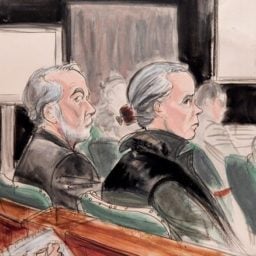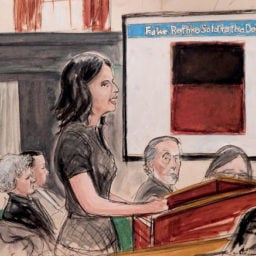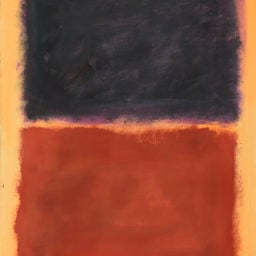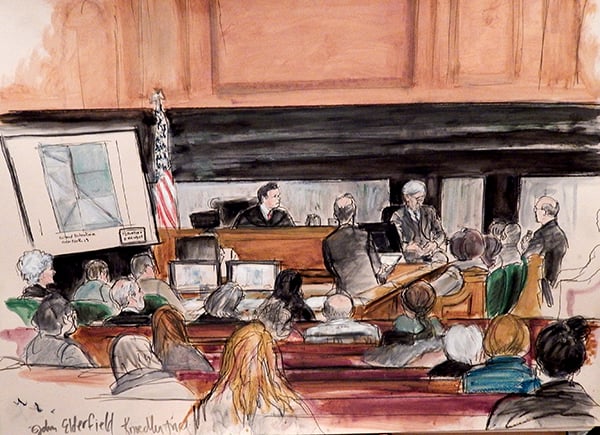

In an abrupt—though not entirely unexpected—turn, the two-and-a-half week Knoedler forgery trial in US District court in Manhattan, where collectors Eleanore and Domenico De Sole filed a $25 million lawsuit over the sale of a fake Mark Rothko painting, ended Wednesday.
Perhaps most surprising was the lack of any formal announcement, nor even an appearance in the courtroom by presiding Judge Paul Gardephe or the jury. Also absent, after two weeks of continuous attendance, were the De Soles themselves. The attorney for the De Soles, Gregory Clarick, said he was in Atlanta for a board meeting.
This followed an early adjournment on the afternoon of Tuesday, February 9, after Judge Gardephe advised the court that there had been a “development” in the case. It also coincided with the pending and eagerly awaited testimony of former Knoedler owner Michael Hammer and Ann Freedman herself.
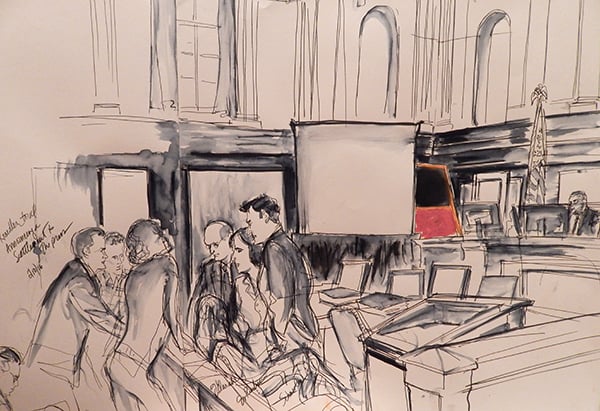
The lawyers confer shortly before settling the Knoedler forgery trial.
Photo: Elizabeth Williams, courtesy Illustrated Courtroom.
Shortly after 9:30 this morning, the attorneys for both the De Soles and Knoedler Galleries all filed into the judge’s chambers and emerged roughly half an hour later. As the crowded court room sat waiting expectantly, one attorney put on his coat while another, asked if this was a coffee break, joked “Is it too early for a drink?”
In response to questions from the numerous reporters in the room, the attorneys for both the De Soles and Knoedler confirmed a settlement. Though terms were not disclosed, Knoedler attorney Charles Schmerler told artnet News that it was “a fair, reasonable and good settlement,” and added that he was pleased to see the settlement with Ann Freedman, which happened this past weekend and had enabled today’s agreement.
Asked about several other pending lawsuits against Knoedler and Freedman, which allege near-identical claims, Schmerler said those cases were moving forward and that his team would continue to represent Knoedler. Observers have been wondering how this week’s settlements could potentially impact these pending claims.
“We are honored to have the opportunity to represent the De Soles on this important case,” Emily Reisbaum, one of the attorneys for the De Soles, told artnet News, “and to be able to tell the truth,” about what happened in their purchase of a purported Rothko.
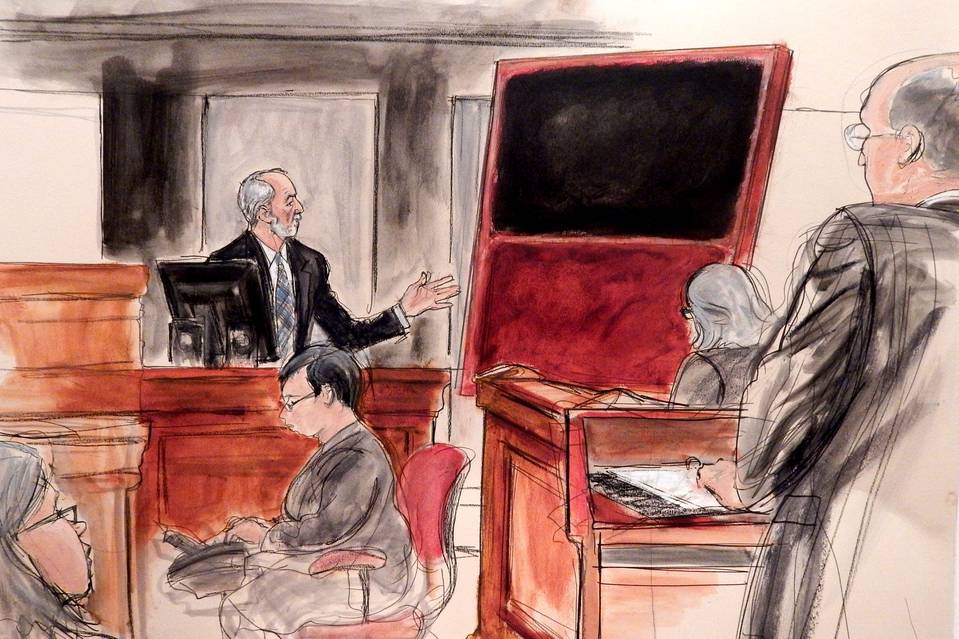
A courtroom sketch of Domenico De Sole on the witness stand with the fake Rothko painting he bought from Knoedler gallery.
Photo: Elizabeth Williams, courtesy Illustrated Courtroom.
Attorneys would not comment on the monetary amount. The De Soles, who spent $8.4 million on the painting and millions more in ensuing legal fees, were seeking $25 million.
However, in a surprising revelation that came yesterday, during testimony by former Knoedler CFO Ruth Blankschen, it was revealed that the gallery had settled a lawsuit brought by hedge fund manager Pierre LaGrange, for a fake Pollock for which he paid $17 million, for a mere $6.4 million. Given that the work had been partly owned by Canadian investor David Mirvish, it was unclear whether $6.4 million represents the entire amount of the settlement, or if additional funds were paid out.
It was an anticlimatic end to over two weeks of dramatic and often damning testimony by a parade of high-profile experts outlining how the now-shuttered Knoedler gallery and its former president Ann Freedman were able to sell tens of millions of dollars worth of formerly undocumented paintings that they convinced buyers were by the hands of famous artists such as Jackson Pollock, Willem de Kooning, Mark Rothko, and Robert Motherwell.
The US Justice Department’s criminal investigation revealed that the works were actually created by a Chinese painter named Pei-Shen Qian in Queens who was commissioned to create the works by Long Island dealer Glafira Rosales and her partner Jose Carlos Bergantiños Diaz. Rosales, the only person to plead guilty in the criminal case, is awaiting sentencing. Qian, who was indicted in 2014, has fled to China. Bergantiños Diaz, and his brother Jesus were arrested in Spain and released on bail but there has been no update on whether or not they will be extradited to the US.
A spokeswoman for the US Department of Justice told artnet News that no sentencing date has yet been set for Rosales. She would not comment on or confirm that there was an investigation.

